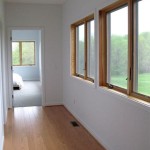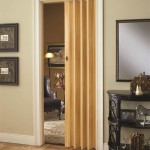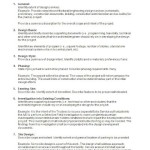Stairs in Interior Design: More Than Just a Way to Get Up and Down
Stairs are an essential feature in multi-story homes, serving as the primary means of vertical transportation. However, in the realm of interior design, stairs transcend their purely functional role and become integral elements that contribute significantly to the aesthetics and ambiance of a space. From their material and design to their placement and integration with the surrounding decor, stairs offer a wealth of opportunities to enhance the visual appeal, functionality, and overall character of a home.
1. The Material and Design Impact
The material and design of stairs play a crucial role in shaping the overall feel of a space. A staircase constructed from solid oak, for example, exudes a sense of timeless elegance and durability, perfectly complementing traditional architectural styles. Conversely, sleek, modern staircases crafted from steel and glass convey a sense of sophistication and minimalism, often found in contemporary homes.
The shape and form of the stairs themselves also contribute to the aesthetic. Classic straight stairs offer a sense of simplicity and practicality, while curved or spiral staircases add a touch of flair and drama, often serving as a focal point in the space. The choice of railing design, whether ornate and traditional or minimalist and modern, further reinforces the overall style and aesthetic of the stairs.
2. Integrating Stairs Into the Design
Beyond their material and design, the placement and integration of stairs within the overall interior design scheme are equally important. Stairs can be incorporated into the surrounding space in numerous ways, either seamlessly blending into their environment or serving as a dramatic architectural feature. In open-plan spaces, stairs can be used to define distinct areas, creating a visual separation between the living room and dining area, for instance.
For homes with limited space, a strategically designed staircase can be used to create a sense of openness and flow. Utilizing under-stair storage or incorporating seating areas within the stairwell can maximize functionality and enhance the overall living space. The addition of decorative elements such as lighting, artwork, or plants can further elevate the aesthetic appeal of stairs and transform them into a captivating centerpiece.
3. The Impact of Stairs on Space and Light
The design and placement of stairs have a significant impact on the flow of space and the distribution of natural light. A wide, open staircase can create a sense of grandeur and openness, while a narrow, enclosed staircase can make a space feel smaller and more intimate. The use of strategically placed windows or skylights can enhance the visual appeal of the stairs while flooding the stairwell with natural light.
The use of color and texture further influences the overall ambiance of the stairs. Light colors tend to create a sense of spaciousness and brightness, while darker colors can add depth and drama. The choice of carpet or flooring materials can also contribute to the overall style and feel of the stairs, from the warmth and comfort of a traditional rug to the sleek and modern look of polished concrete or hardwood.

Leo Design Group 6 Popular Types Of Interior Staircase

53 Stunning Staircase Design Ideas Modern Home Stairs Stairway

27 Stylish Staircase Decorating Ideas How To Decorate Stairways

Interior Stairs Siller

10 Iconic Staircase Designs For Your Home Interiors Design Cafe

Staircase Design By Miami S Best Interior Designers

Staircase Interior Design By Eestairs

Leo Design Group 6 Popular Types Of Interior Staircase

14 Stunning Staircase Design Ideas And Types Foyr

Sky S The Limit For This Brick And Concrete Bungalow Staircase Design Modern Home Stairs








